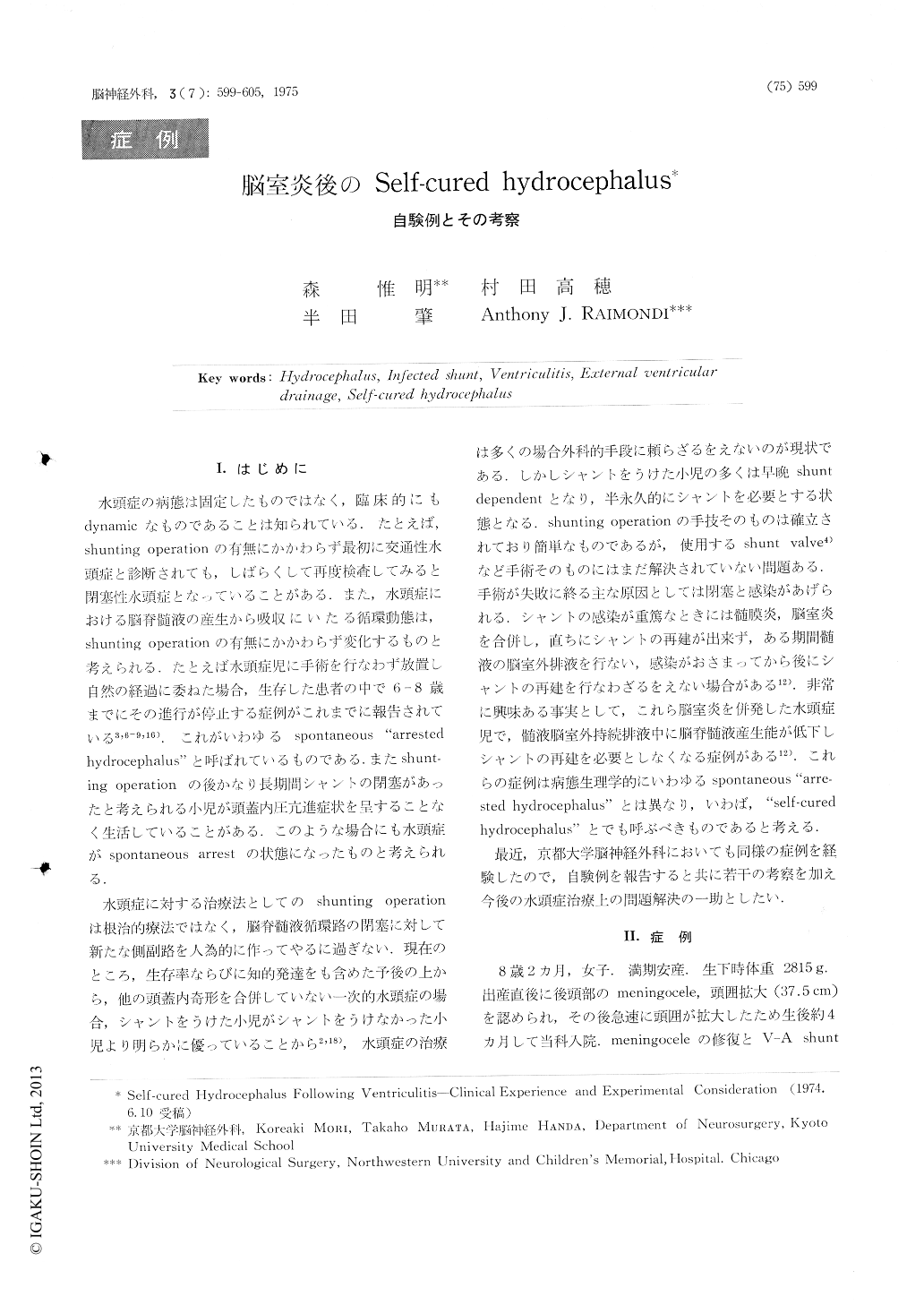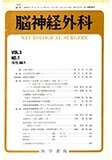Japanese
English
- 有料閲覧
- Abstract 文献概要
- 1ページ目 Look Inside
Ⅰ.はじめに
水頭症の病態は固定したものではなく,臨床的にもdynamicなものであることは知られている.たとえば,shunting operationの有無にかかわらず最初に交通性水頭症と診断されても,しばらくして再度検査してみると閉塞性水頭症となっていることがある.また,水頭症における脳脊髄液の産生から吸収にいたる循環動態は,shunting operationの有無にかかわらず変化するものと考えられる.たとえば水頭症児に手術を行なわず放置し自然の経過に委ねた場合,生存した患者の中で6-8歳までにその進行が停止する症例がこれまでに報告されている3,6-9,16).これがいわゆるspontaneous"arrested hydrocephalus"と呼ばれているものである.またshunting operationの後かなり長期間シャントの閉塞があったと考えられる小児が頭蓋内圧九進症状を呈することなく生活していることがある.このような場合にも水頭症がspontaneous arrestの状態になったものと考えられる).
水頭症に対する治療法としてのshunting operationは根治的療法ではなく,脳脊髄液循環路の閉塞に対して新たな側副路を人為的に作ってやるに過ぎない.
Dynamics of CSF circulation is often altered in the presence of intracranial pathology especially in hydrocephalus. Most neurosurgeons acknowledge that the status of hydrocephalus often changes regardless of the type of treatment.
In the follow-up of hydrocephalic children who underwent shunting operation, not a few hydrocephalic children have been doing well in spite of shunt malfunction for a long period. Interestingly enough, we have experienced the children who need no longer shunt after shunt infection complicated by ventriculitis.

Copyright © 1975, Igaku-Shoin Ltd. All rights reserved.


